In the first part of our series, we unveiled the invisible invasion of microplastics into our freshwater ecosystems, highlighting their sources, pathways, and the ensuing environmental impacts. As we navigate further, it’s clear that understanding the problem is only the first step. Now, we shift our focus toward actionable solutions and collaborative efforts to mitigate this pervasive issue. This blog aims to inspire hope and drive change, illustrating how innovation, policy, and community action can turn the tide against microplastic pollution.
Source Reduction: The First Line of Defense
At the heart of our fight against microplastic pollution is the principle of source reduction. By minimizing the amount of plastic we use and produce, we tackle the problem at its root, preventing these materials from ever becoming waste or, eventually, microplastics in our ecosystems.
Embracing Alternatives to Single-Use Plastics
Our daily lives are filled with single-use plastics: from the straw in our morning smoothie to the plastic bag carrying our groceries. The first step towards source reduction is replacing these disposables with sustainable alternatives. Products like bamboo cutlery, reusable water bottles, and cloth shopping bags not only reduce plastic waste but also foster a culture of sustainability. Companies like Beyond Plastic, which might offer a range of eco-friendly packaging solutions, illustrate the potential for innovation in this space, providing consumers and businesses alike with practical options to replace single-use plastics.

Legislative Action
The role of policy cannot be understated in the effort to reduce plastic pollution. By enacting bans on microbeads found in personal care products and limiting the availability of single-use plastic items such as bags, straws, and utensils, governments can significantly cut down the amount of plastic entering our environment. These policies not only remove harmful items from circulation but also send a strong message about the importance of sustainability and the need for change at both the individual and collective levels.
Improved Waste Management: Closing the Loop
Proper waste management is crucial for preventing plastic materials from degrading into microplastics and contaminating our freshwater ecosystems. By closing the loop through enhanced recycling processes and adopting principles of the circular economy, we can significantly reduce the ecological footprint of our plastic use.
Advancements in Recycling Technologies
The recycling industry is at the forefront of innovation, developing new technologies that allow for the more efficient processing and repurposing of plastic waste. CleanLoop Recycling, a leader in this field, is pioneering methods to sort, clean, and recycle plastics more effectively, turning waste into new products and reducing the need for virgin plastic production. These advancements not only support environmental sustainability but also offer economic benefits by creating materials and products from recycled content.
Promoting Circular Economy Principles
The circular economy represents a systemic shift in how we produce, use, and dispose of goods. It emphasizes keeping materials in use for as long as possible, extracting the maximum value from them while in use, and recovering and regenerating products and materials at the end of their life cycle. By designing products with their eventual disposal in mind, manufacturers can reduce waste and facilitate recycling, contributing to a more sustainable and efficient use of resources. This approach not only helps in managing waste more effectively but also in reducing the overall production of plastics, addressing the issue of microplastic pollution from multiple angles.
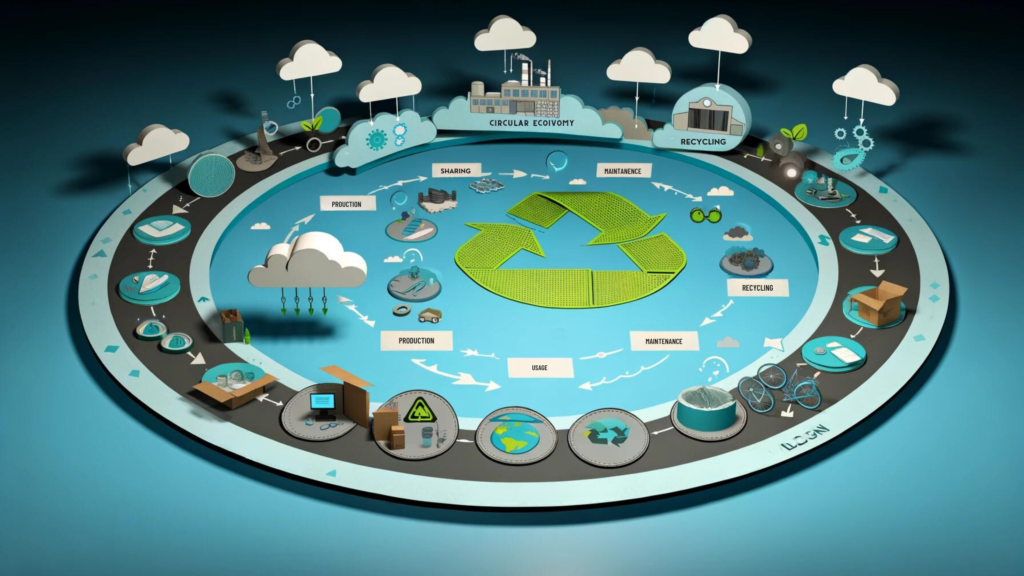
Through initiatives in source reduction and improvements in waste management, we can significantly decrease the amount of plastic entering our ecosystems and mitigate the formation of microplastics. These strategies, combined with a commitment to sustainability from individuals, businesses, and governments, pave the way for a future where our freshwater ecosystems are no longer threatened by the invisible invasion of microplastics.
Wastewater Treatment Upgrades: Filtering Out the Problem
Upgrading our wastewater treatment infrastructure is a critical step in intercepting microplastics before they reach our rivers, lakes, and oceans. Traditional wastewater treatment plants (WWTPs) are not designed to capture microplastics efficiently, allowing these pollutants to slip through the cracks—quite literally.
Implementing Microfiltration Technologies
The introduction of microfiltration and ultrafiltration technologies into existing WWTPs represents a significant leap forward. These systems use membranes with tiny pores that are capable of capturing particles much smaller than traditional filters can. By integrating these advanced filtration systems, we can drastically reduce the volume of microplastics entering our waterways from household and industrial wastewater. It’s akin to placing a highly effective sieve that catches the particles that were previously invisible to the conventional treatment processes.
Upgrading Existing Infrastructure
The challenge of retrofitting existing wastewater treatment facilities with these advanced systems cannot be understated. However, the long-term benefits in terms of reduced microplastic pollution are immense. Investments in upgrading our WWTPs will not only help in mitigating microplastic pollution but also enhance the overall quality of the treated water. Municipalities and governments play a crucial role in allocating funds and supporting these upgrades, demonstrating a commitment to environmental protection and public health.

Research and Monitoring: The Foundation of Effective Solutions
Understanding the scale and specifics of microplastic pollution requires ongoing research and robust monitoring programs. Without accurate data on where, how, and in what quantities these pollutants are entering our ecosystems, crafting effective solutions remains a shot in the dark.
Establishing Comprehensive Monitoring Programs
Developing comprehensive monitoring programs is vital for tracking the presence and distribution of microplastics across various ecosystems. These programs involve systematic sampling of water, sediment, and aquatic organisms to assess the concentration and types of microplastics present. By gathering data over time, scientists can identify trends, and hotspots of pollution, and assess the effectiveness of implemented mitigation strategies. This continuous stream of data provides the evidence base needed to inform policy decisions and prioritize action areas.
The Role of Global Research Collaborations
Microplastic pollution is a global challenge that benefits from international research collaborations. Sharing methodologies, data, and findings across borders accelerates our understanding of microplastic dynamics and their impacts. Initiatives like the International Microplastics Research Consortium (an organization) exemplify how pooling resources and expertise can lead to breakthroughs in detection methods, pollution tracking, and the development of innovative solutions.
Citizen Science: Engaging the Public
Involving the public through citizen science projects not only expands the reach of monitoring efforts but also raises awareness about microplastic pollution. By training volunteers to collect samples and report findings, research initiatives can cover a broader area than would be feasible for scientific teams alone. Moreover, participating in these projects empowers individuals, fostering a deeper connection to their local environments and a vested interest in protecting them.
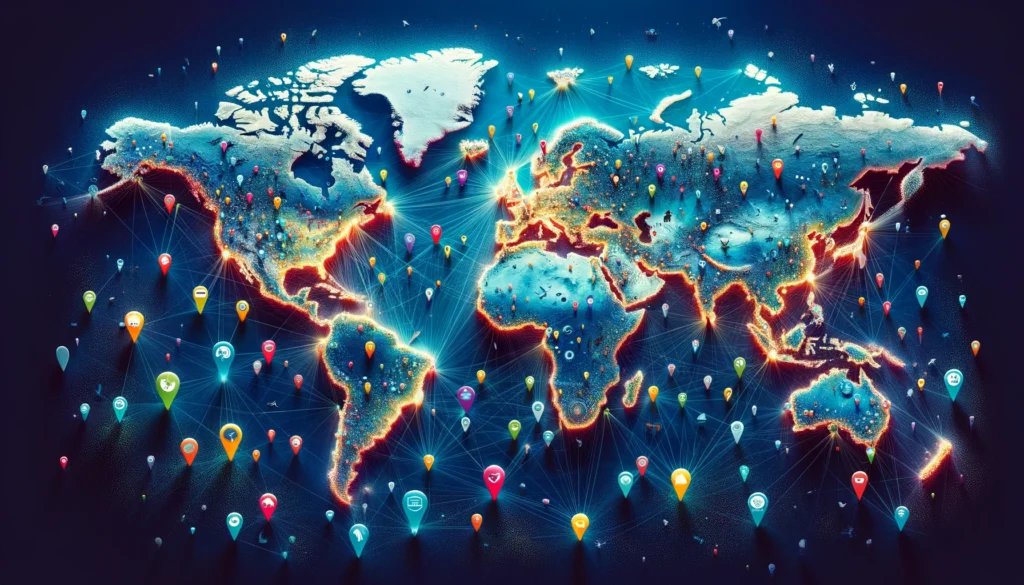
International Cooperation: A Global Challenge Requires a Unified Response
The fight against microplastic pollution transcends national borders, requiring a concerted effort from the global community. As microplastics navigate the waters of the world, they remind us of our interconnectedness and the shared responsibility to protect our planet.
Sharing Best Practices and Technologies
One of the most powerful tools in our arsenal is the exchange of knowledge and technologies between countries. For instance, a breakthrough in microfiltration technology in one country can be a game-changer for others struggling with similar pollution issues. International forums, conferences, and treaties play a pivotal role in facilitating these exchanges, acting as bridges between nations. By adopting a collaborative mindset, countries can implement the most effective strategies and technologies in their battle against microplastics, optimizing resources and efforts on a global scale.
Building on International Agreements
The foundation for international cooperation on environmental issues has been laid by agreements such as the Paris Agreement on climate change and the Convention on Biological Diversity. Similar global frameworks specifically targeting plastic pollution are crucial for setting targets, tracking progress, and ensuring accountability among nations. These agreements can provide the structure needed for a unified approach to tackling microplastic pollution, with countries committing to reduce plastic use, enhance recycling, and support research and innovation.
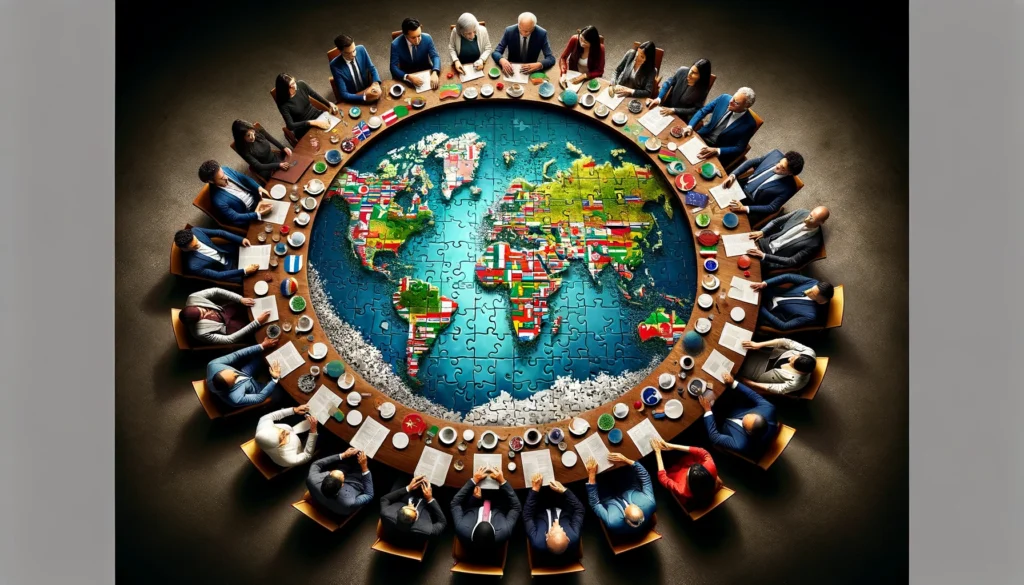
Engaging the Community: Everyone Has a Role to Play
The battle against microplastics is not just fought in the halls of the United Nations or scientific laboratories; it is also waged in local communities, schools, and individual households. Grassroots movements and community engagement are vital for creating a groundswell of support for actions against plastic pollution.
Citizen Science Projects
Citizen science projects offer a powerful platform for engaging the public in scientific research. By participating in local microplastic sampling initiatives, individuals can contribute valuable data while gaining a deeper understanding of the issue. Projects like the Global Microplastic Watch (an initiative) invite people from all walks of life to become citizen scientists, using simple tools and methodologies to track microplastic pollution in their local waterways. This hands-on involvement demystifies scientific research and fosters a sense of ownership and responsibility towards the environment.
Grassroots Movements and Awareness Campaigns
Local movements and awareness campaigns are the heartbeat of community engagement. Through workshops, school programs, and social media campaigns, these movements spread knowledge about the sources of microplastics and their impacts, inspiring people to adopt more sustainable practices. Initiatives such as Plastic-Free July or local beach clean-up events not only help reduce plastic waste but also build a community of environmentally conscious individuals committed to making a difference.
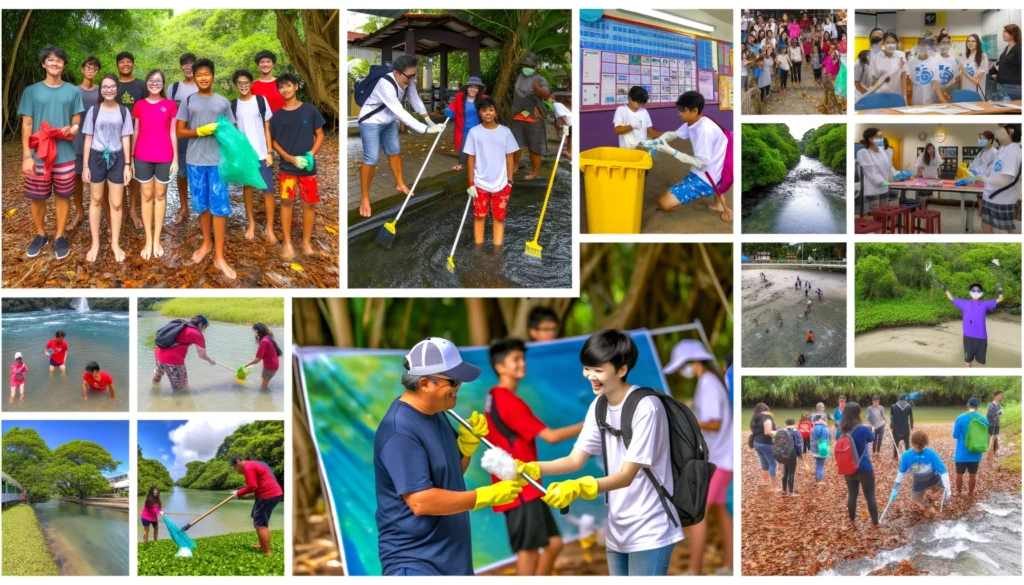
The journey towards mitigating microplastic pollution is a collective one, requiring the engagement and cooperation of the international community, local governments, and individuals alike. By combining our efforts, sharing knowledge, and fostering a culture of sustainability, we can turn the tide against microplastics and ensure the health of our freshwater ecosystems for future generations.
Author’s Note
As we conclude this two-part series on microplastics, it’s clear that the journey toward cleaner freshwater ecosystems is a collective endeavor. Each strategy, from reducing plastic use to enhancing waste management and fostering international cooperation, plays a vital role in mitigating the impact of microplastics. By embracing innovation, advocating for policy changes, and participating in community actions, we can turn the tide against microplastic pollution. Let’s collaborate to safeguard our valuable water resources for the benefit of future generations.
G.C., Ecosociosphere contributor.
References and Further Reading
- “Plastics and the circular economy – deep dive” – An exploration of the latest advancements in recycling technologies and their role in promoting sustainability.
- “Green strategies for microplastics reduction” – A comprehensive review of international policies and agreements aimed at reducing microplastic pollution.
- “Community Action against Plastic Waste (CAPWs)” – Inspiring stories of communities around the world taking a stand against plastic pollution, offering valuable lessons and actionable insights.
Together, we can make a difference. Stay informed, get involved, and be part of the solution to ensure the health and vitality of our freshwater ecosystems.



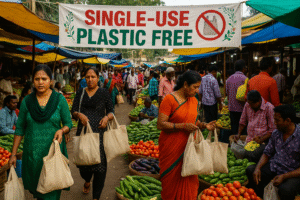

Comments
Thank you for your sharing. I am worried that I lack creative ideas. It is your article that makes me full of hope. Thank you. But, I have a question, can you help me?
Can you be more specific about the content of your article? After reading it, I still have some doubts. Hope you can help me.
Thanks for sharing. I read many of your blog posts, cool, your blog is very good. https://www.binance.com/it/join?ref=S5H7X3LP